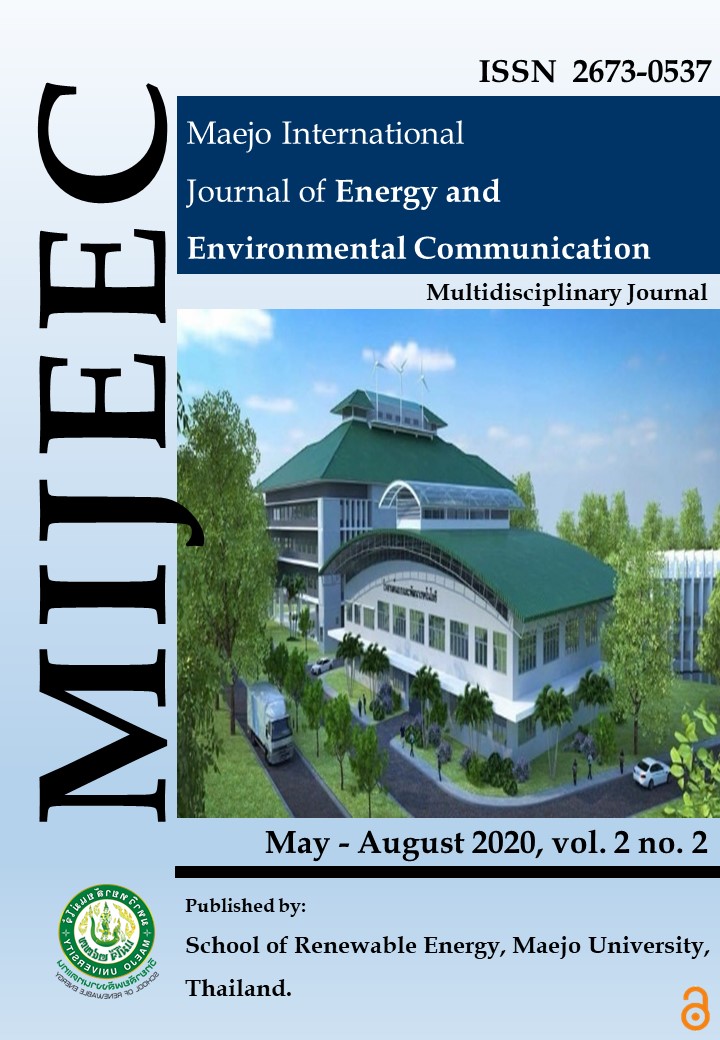Replacement of fish meal using pig manure as protein source for Nile tilapia culture
Main Article Content
Abstract
The cost of fish feed is a significant constraint to freshwater fish farming in Asia. In the aquaculture value chain, feed is a responsible factor and accounts for nearly 75% of the total cost of fish production in many countries. Therefore, this study attempts to focus the feasibility of using pig manure fermentation to formulate feed pellets to culture the tilapia fish in the cement pond, along with the cultured using ready-made feed containing the residue from the manure fermentation at different ratios. Accordingly, the experimental studies were approached by two types of experiments, namely, experiment 1 (focused on the nutrients in pig manure collected from an anaerobic system farm), and experiment 2 (studied the appropriate level of pig manure to be used as a raw material for fish feeding). The five months’ fermentation of pig manure contains 17.09% protein, which is the highest amount of nutrition source. Digestate manure was estimated; other primary macronutrients, including nitrogen, phosphorus, and potassium, were 2.73, 0.55 and 1.22 %, respectively. Also, a considerable amount of essential micronutrients, for example, copper, manganese and zinc, were found in the digestate. Nile tilapia were grown at the cement ponds for 120 days. The maximum verified dry matter and protein digestibility in tilapia were attained for diets containing 10 % percent pig manure at 89.28 ± 4.09 and 56.64 ± 1.43 (p> 0.05), respectively. In this study experimental results indicated that fish meal consisting of 15% manure was found to be the most acceptable substitute source of protein for tilapia production. This implies that the cost of fish meal production using fermented pig manure can be significantly lowered, gain higher profit and provide significant economic benefits to farmers.
Article Details
Copyright © 2019 MIJEEC - Maejo International Journal of Energy and Environmental Communication, All rights reserved. This is an open-access article distributed under the terms of the Creative Commons Attribution-NonCommercial- Attribution 4.0 International (CC BY 4.0) License






